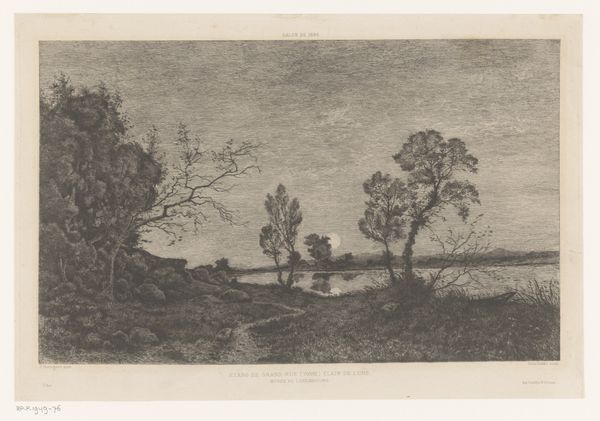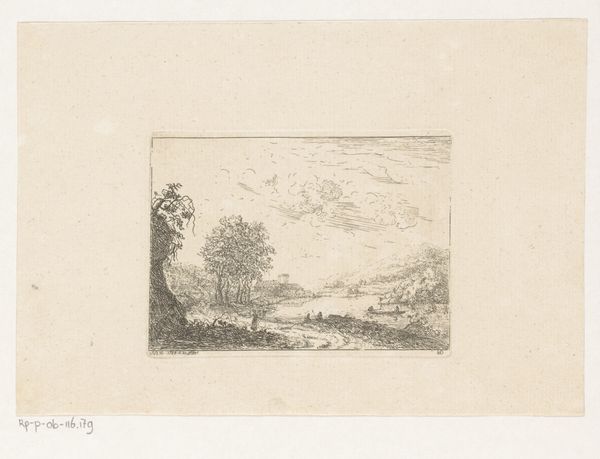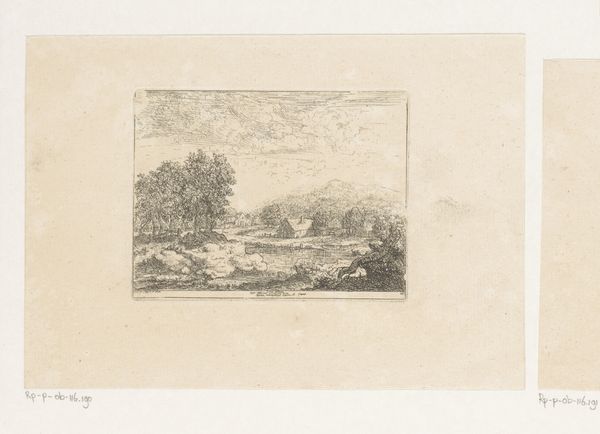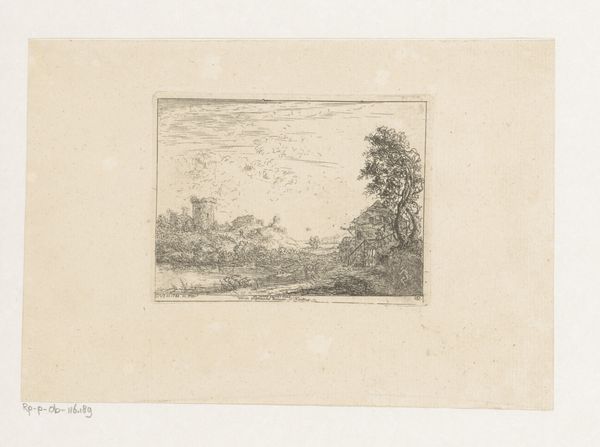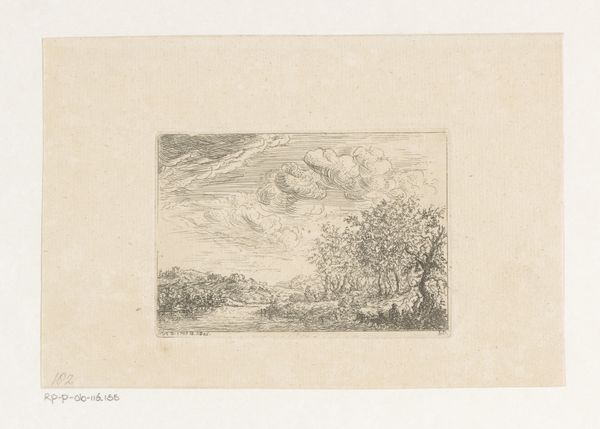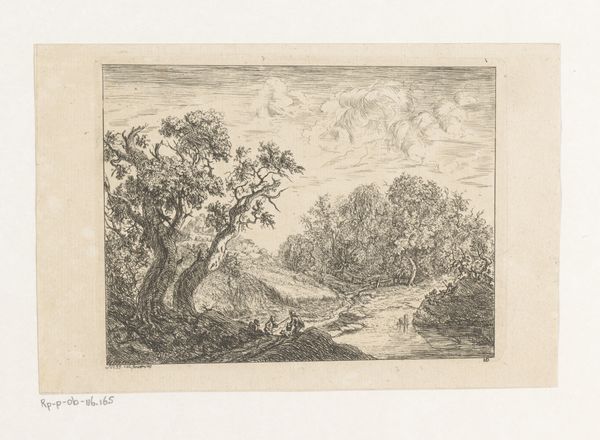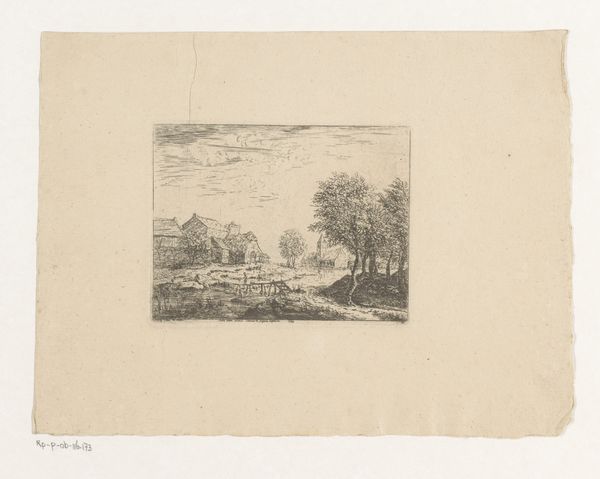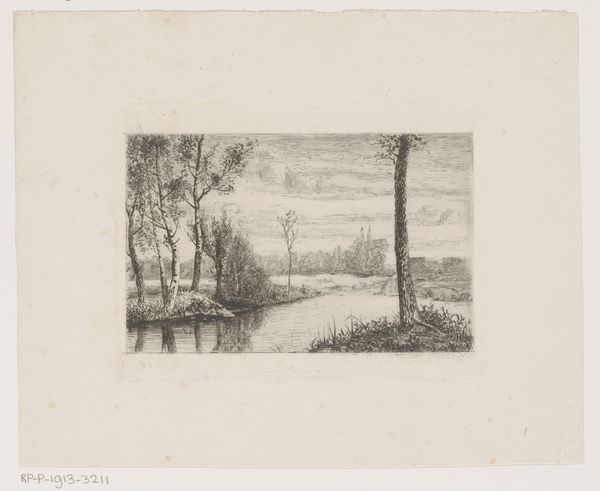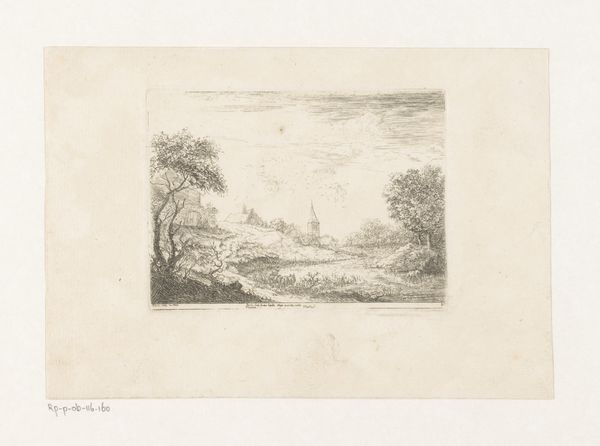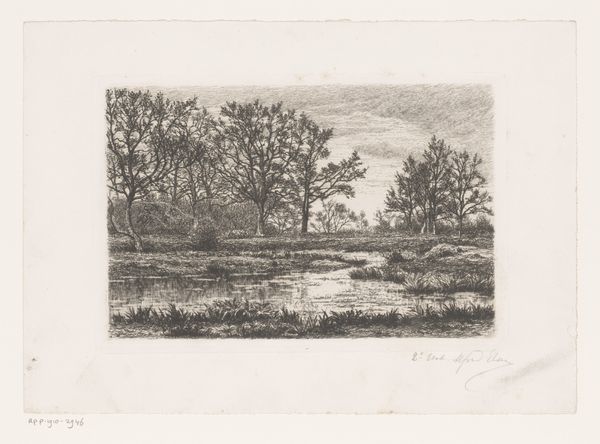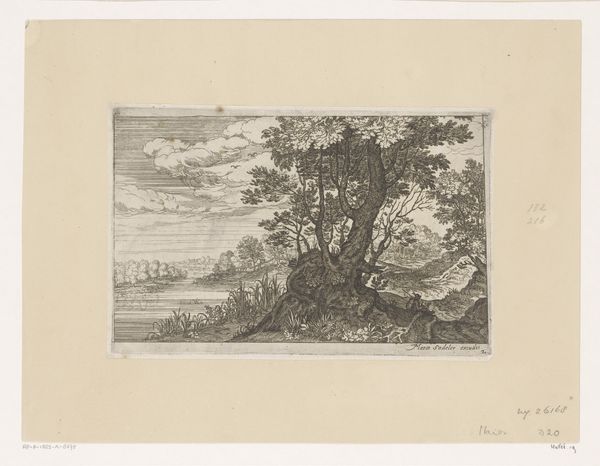
print, etching
# print
#
impressionism
#
etching
#
landscape
#
river
Dimensions: height 120 mm, width 188 mm
Copyright: Rijks Museum: Open Domain
Curator: Here we have Théophile de Bock’s “Rivierlandschap,” a landscape created sometime between 1861 and 1904. The Rijksmuseum holds this intriguing etching. Editor: There’s a quiet melancholy to this print. It feels like looking at a half-remembered dream, something both familiar and slightly distant. The stark contrast certainly enhances that somber quality. Curator: Indeed, it’s all about process here. Bock's skilled etching brings us to a scene wrought by labor—both the artist’s, carefully manipulating the copper plate, and the landscape itself, slowly shaped by time and the river. Think of the mordant he uses, the specialized knowledge in applying it to metal… Editor: Speaking of time, to me the river is timeless, almost mythic. Water as a constant symbol of change, reflection, and the subconscious mind… those two skeletal trees on either side only emphasize that, like guardians to a liminal space. What's interesting to think about is, how did the water become such an enduring motif? Curator: We have to think about the socio-economic conditions, how these influenced subject matter. Bock was part of a generation experiencing increasing industrialization. Representing nature this way speaks to the relationship between human labor and a changing landscape, don't you think? And what class consumed such prints? What did it signify? Editor: Absolutely, and perhaps also to what they *longed* for. Landscapes always become these emotional repositories, reflecting idealized versions of a world that’s either lost or desired. The river, then, becomes less about water, but rather, about the longing to escape back to something purer. Curator: I see your point, but looking at his marks, the physical trace of the burin... to truly see art, we should also look closely at what has been materially produced and then sold within specific economic circuits. It allows us to unpack ideology that is present on a visual level. Editor: Fair enough, and together we can also acknowledge the emotional weight carried across generations, manifested here. Bock creates more than a landscape—he taps into a shared consciousness, doesn't he? Curator: Perhaps it also taps into a shared set of manufacturing standards that created such objects and defined its marketability at that time... I guess, however we see it, we learn so much more. Editor: A compelling piece indeed.
Comments
No comments
Be the first to comment and join the conversation on the ultimate creative platform.

